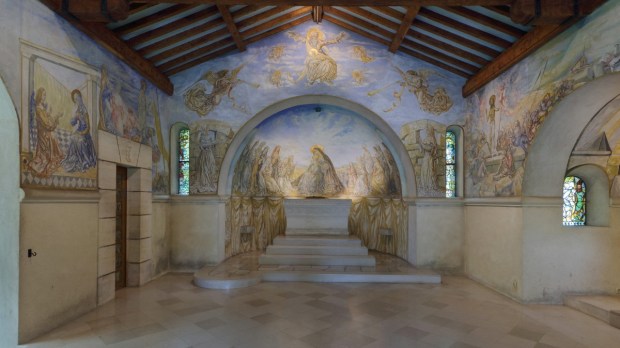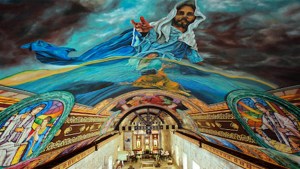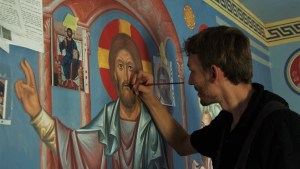Lenten Campaign 2025
This content is free of charge, as are all our articles.
Support us with a donation that is tax-deductible and enable us to continue to reach millions of readers.
How does a Japanese artist, living in France, come to paint the walls of a chapel? The Franco-Japanese artist Léonard Tsuguharu Foujita was a Buddhist. He converted to Catholicism in 1959, after a long career in France. Following this conversion, he wished to build a chapel. His godfather, who was the head of the Mumm Champagne house, bought a piece of land to enable him to make his dream come true.
Foujita wanted it to be a Romanesque-inspired chapel, considering this architectural style to be the purest and simplest. The construction project was entrusted to an architect.
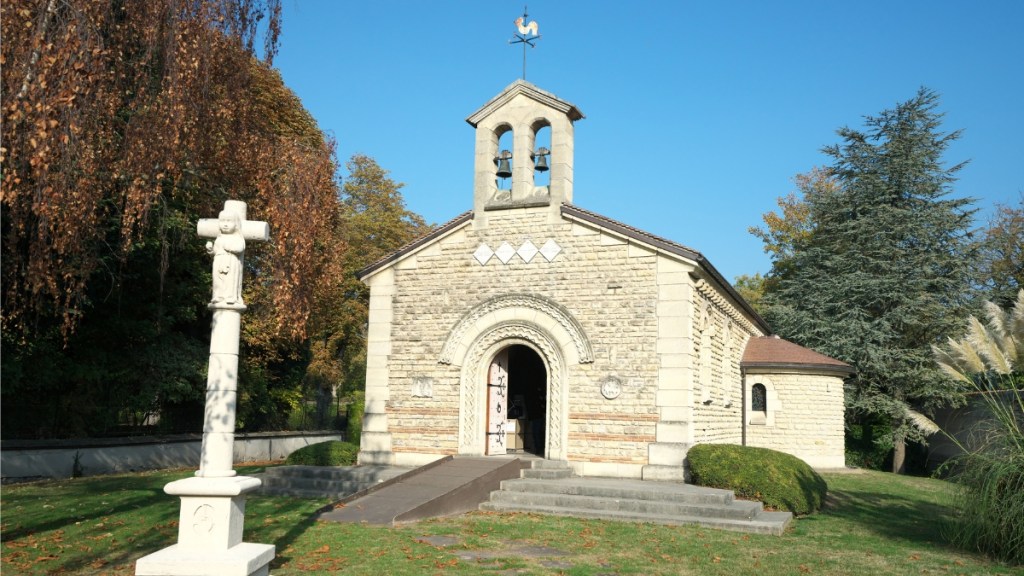
As soon as the building was completed, the walls of the chapel were painted almost entirely with frescos by Foujita, who was then 80 years old. He also designed the stained glass windows.
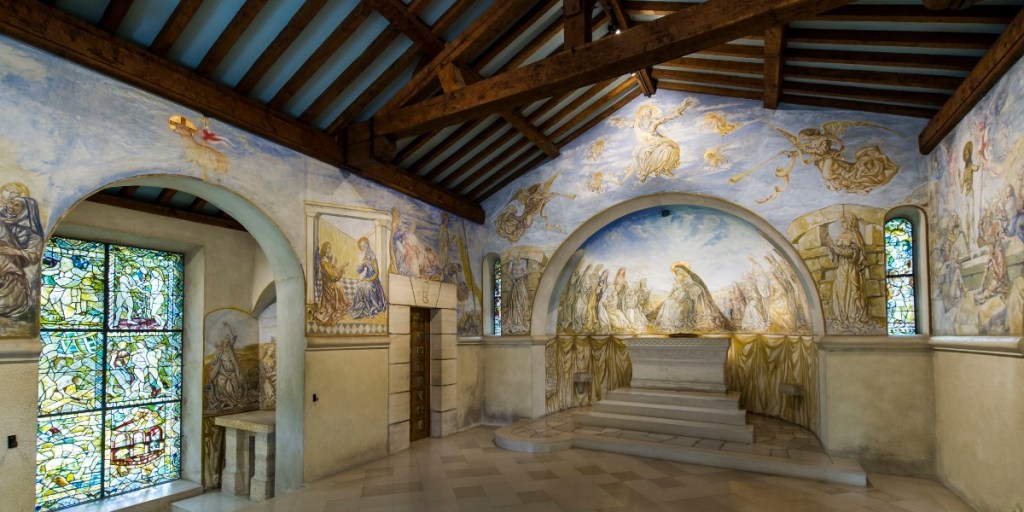
Why Our Lady of Peace?
The name Foujita chose for this building with its modest exterior is Our Lady of Peace (Notre-Dame-de-la-Paix). He chose the title as a reference to “Pacem in Terris,” Pope John XXIII’s encyclical. Published in 1963 in the midst of the Cold War, three years before the chapel was built, it’s a message of peace addressed not only to Catholics but to all peoples.
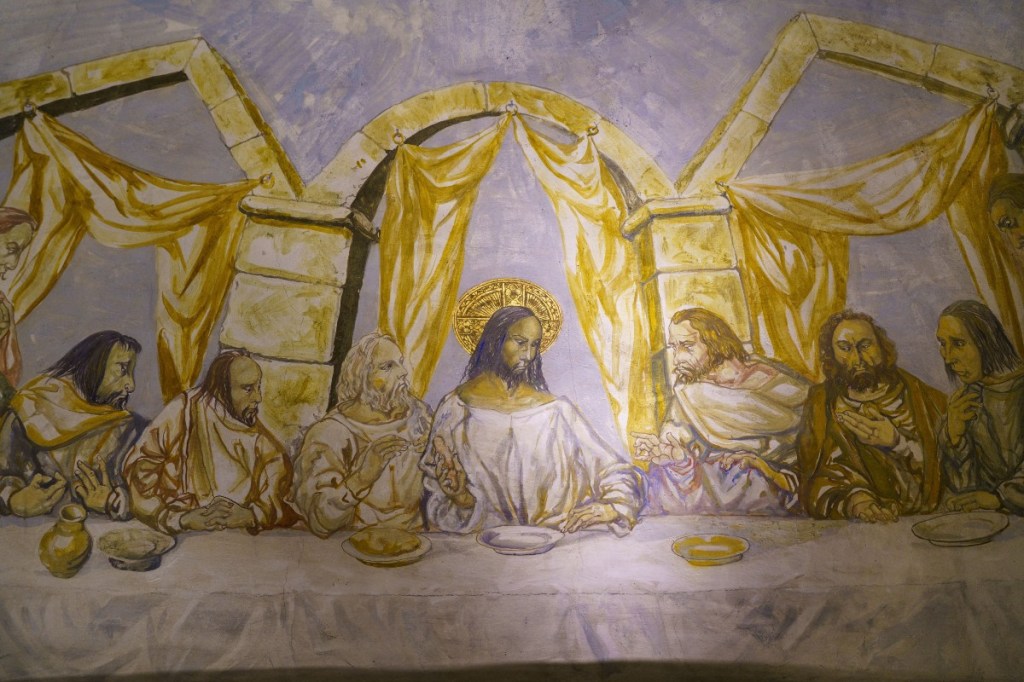
The Old and New Testaments are the primary sources of inspiration for the painter. A fervent admirer of the painters of the Italian Renaissance, he drew heavily on the works of Michelangelo and Leonardo da Vinci. He also chose his baptismal name in honor of Leonardo, as well as in honor of Blessed Leonard Kimura, one of the martyrs of Japan. The back of the apse is occupied by a fresco evoking Our Lady of Peace.
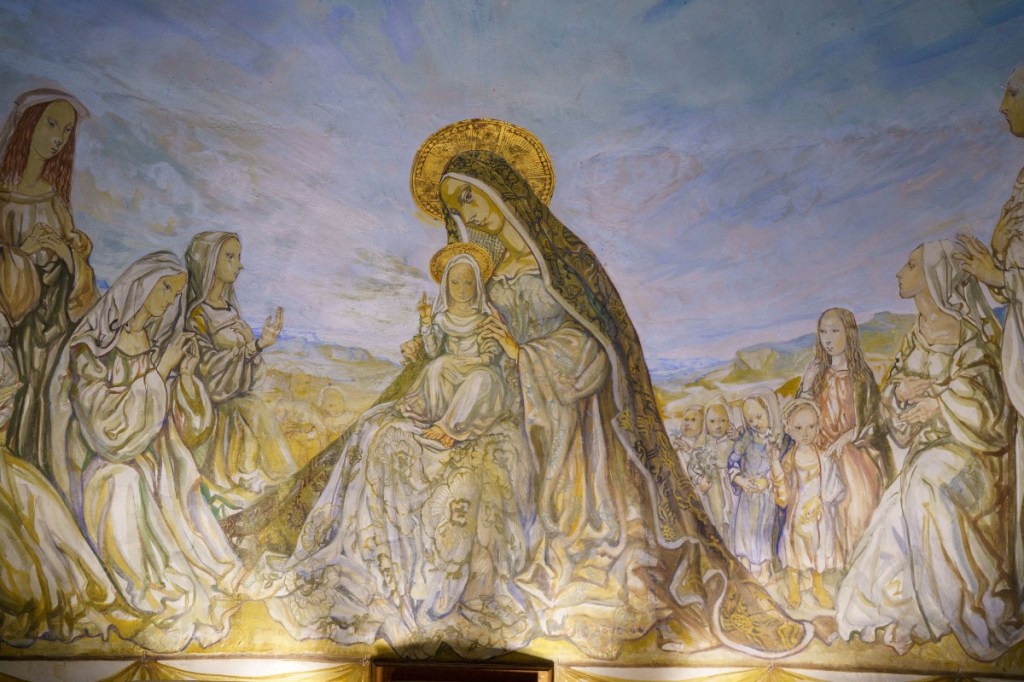
Above the high altar, on the same blue background with clouds, God the Father welcomes the faithful and visitors.

Various scenes from the life of Jesus are represented on all the walls. Near the baptistery is the Baptism of Christ. On the inside of the church facade is the cycle of Jesus’ life, ending with the Resurrection.
To these usual sources of inspiration for a church, Foujita added a touch of Japanese tradition: Flowers (such as chrysanthemums) and insects recall his Asian origins. The drama of Hiroshima also appears in one of his compositions. The painter is buried in this chapel, considered to be his artistic and spiritual testament.
